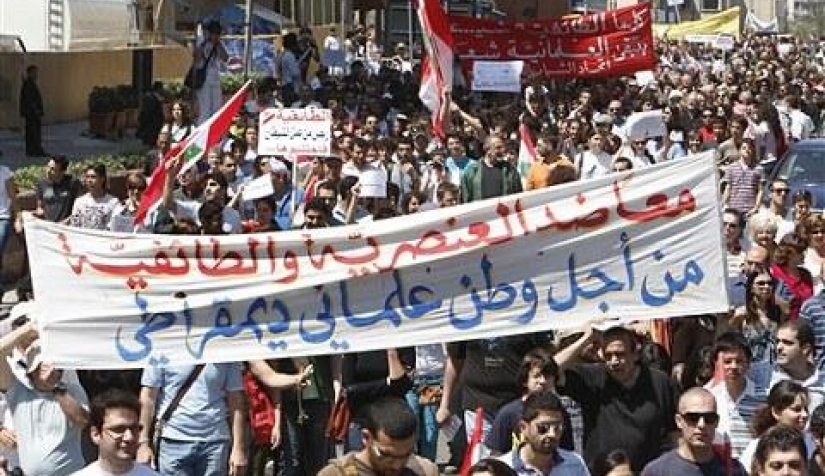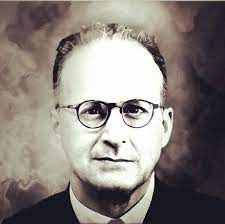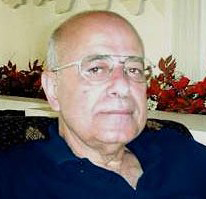
A diversity of answers is a healthy phenomenon when there is almost unanimity about the principle of civilization and the foundations of progress. The problem comes when the answers are incorrect or misjudge or misdiagnose reality – which can only lead to an ineffective and possibly harmful treatment of the malady. This is one of the problems of the failure of the Arab renaissance project, which spawns other problems, as can be seen by a comparison with the European Renaissance.
THE DECISIVE ANSWER to the question of the European Renaissance was formed as a result of authentic internal pre-conditions that emerged from a break with the heritage of the Western Middle Ages, while the question of the Arab renaissance emerged from an external factor – the civilizational shock that resulted from the recognition of the vast gap between the Arab and Western worlds. The overriding desire was simply to make the intervening phase disappear without addressing the conditions for the break. All of which means that
“the Arab Renaissance was not concerned with breaking with the era of decadence, so much as with providing an answer to the anthropological wound. As with every narcissistic wound –in the psychology of the individual as of the collective – the response could only take one of two forms: either an attempt to deny the existence itself of the wound, or an attempt to heal it and remove its pain. The Arab Renaissance embodied both attempts: on the one hand (the Salafist trend in its various variations) the era of the Arab renaissance mobilized itself to fight, that is, to defend most of the values inherited from the glorious past and confirm their continued validity and potential, while on the other hand (the modernization trend in its various colours) the Arab renaissance poured its efforts into critiquing, that is, dissecting the manifestations of backwardness in Arab society, explaining the inadequacy of those values to raise this society from its abyss, and explaining the need for a change in mindset and action among those with influence, so that the East could once again stand equal to the West and regain the centrality which had become marginalized” (1).
The critique of the Arab-Islamic situation focused on answering the question “Why did we fall back?” This means that the prevailing thinking was more theoretical than aiming to reach a solution to problems through the development of clear and accurate practical strategies. In the words of Malek Bennabi, it is a diagnosis that
“does not really deal with the disease, but rather talks about its symptoms.”
It is a treatment for symptoms, not for diseases, when the Islamic world merely enters the pharmacy of Western civilization seeking recovery, without knowing which disease is actually being treated or with which medicine. Hence this situation deserves to be called a ‘civilization gesture’ or a ‘pre-condition stage’ (2), rather than a ‘renaissance era.’
Arabs and Muslims still evaluate civilization on an ancient binary religious scale – the balance of ‘truth’ and ‘falsehood’
The problem lies in the pattern of thinking and perception, which does not tire of searching for the features of the model that it aspires to in its political and civilizational project, and which it fits into ideological fantasies in the realm of political theory and culture. It was only to be expected that this trajectory would fall into the trap of ideology and fundamentalism.(3)
The essential difference is that Western civilization was established on the foundation of modernity, as a critical break with the past, and on a combination of secularization and democracy. Whereas, conversely, the intention was to establish on the one hand an Arab Islamic renaissance, detaching secularism from democracy, and connecting itself on the other hand with the ‘golden age of its past; that is, combating the Islam of decadence with the Islam of openness, as Tarabishi put it. But the call to return to the past is in origin a Salafist call, even if it was sometimes issue by enlightening voices. It is an impossible return to a different principle of civilization, from one era to an entirely different one.
Arabs and Muslims still evaluate civilization on an ancient binary religious scale – the balance of ‘truth’ and ‘falsehood’ – while truth and falsehood in the view of modern logic are experiential matters, and the dispute over them essentially a dispute over criteria rather than facts. The modern principle of civilization is founded upon scientific research, which in turn is based on the principle of doubt. And historical experience tells us that modern scientists could not have surpassed their predecessors had they not pursued the path of skepticism, and understood that faith and scientific research are at opposite poles: a believer cannot be a researcher, and whoever wants to confuse the two will undoubtedly lose his way in either path (4).
The duality of the Arab Nahḍa mindset, critical in confronting oneself, and defensive in confronting the West, condemned it to paralysis, “since by defending itself, it nullifies any criticism of itself, much like the one who denies with the left hand what he affirms with the right.” Added to the foregoing is the desire of the revolutionary mind to burn away the phases when it “desired to move straight onto ideology without passing through a philosophical revolution, or even a theological revolution.” The result was that it simply burned itself (5). But if it is possible, for instance, to establish socialisms without a Marxist theory, is it possible to establish an ideology without going through a philosophical revolution, or even a theological revolution?
There is actually a need for two revolutions: a theological revolution and a philosophical revolution
There is actually a need for two revolutions: a theological revolution that frees the Text from the Text, and this is linked to a philosophical revolution that must precede it in order to free the mind from the Text. There is also a need for a hierarchy or a link between the two revolutions, because we cannot “imagine an Arab Voltaire without a Muslim Luther. In the absence of an Islamic theology, an Arab philosophy will not see the light” (6). However, the delay in the appearance of a Muslim Luther or the abstention of the theological mind from performing its tasks may hasten the emergence of an Arab Voltaire to exercise the functions and effectiveness of theological reasoning via a philosophical mindset.
There are obstacles standing in the way of creating a break with the Islamic heritage: the absence of individualism and the dominance of the herd mentality which has been imposed by the political and religious authorities, and the prevailing assumption in the mind of the believers of the centrality of the Islamic text. This means that criticism of this Text constitutes an insolence against the faith itself, since the majority of Muslims do not distinguish between the sacralised Islamic Texts and Islamic thought as a human and historical understanding of these original Texts. What makes it more difficult is that this understanding enjoys the support of the central state (7).
Secularism, democracy and modernity
The first premises for separating religion from the state is to understand the role and function of religion in the state and in society, to doubt the ability of religious faith to explain everything, to maintain awareness of the importance of philosophical and rational thinking and the importance of science and its capacity to explain the world in a better way. This is not what is happening, since Islam and its proponents still constitute the main points of reference, reactionary Islamic culture is flourishing, particularly in its superstitious aspects and the culture of divine intervention into the minutiæ of human history.
The dispute is not about whether or not to return to the traditional heritage, but about what the purpose of this return actually is
The understanding of secularism and how or whether to adopt it as a solution differs between those who call for ‘partial’ or ‘comprehensive’ secularism, and those who reject the secular solution altogether under the pretext that it is not needed. This is because the Islamic religion – as Muḥammad ‘Amāra and others maintain “is both a religion and a state” that distinguishes but does not separate between what is religious and what is worldly, between what is politics and what is Revelation. Because of this understanding that refuses to make a distinction between the tasks of the faith and the tasks of the state, both secularism and democracy, its twin, are in political practice separated. This is done without realizing that secularism, democracy and modernity are a necessary condition for the renaissance, since “secularism is a central constant of democratic science and practice, and one of the founding principles of the democratic choice”. There can be no democracy without secularism (8).

Suggested Reading
The refusal to accept secularism and modernity is based on a misunderstanding of modernity’s position on the traditional heritage: that is, that there is a complete contradiction between them, although this does not take into account the ‘post-post-modern’ stage that restores heritage to its position as a partner to the present, but in a way that retains the spirit of criticism and avoids glorification.
The dispute, then, is not about whether or not to return to the traditional heritage, but about what the purpose of this return actually is. The goal of the Islamists is to sanctify the heritage – which means continuing to consecrate history as a burden on the Message, while the goal of modernity is to recreate the heritage, in the sense of ‘stirring up the creative mindset against the created mindset’ or freeing the Message from the burden of history, as Tarabishi put it.
The result of the critical efforts in this context will lead to one of three principal results: the Islamization of secularism, the secularization of Islam, or the prolongation of the situation as it stands.
1) George Tarabishi, من النهضة إلى الردة (From Renaissance to Apostasy), p. 10
2) Malek Bennabi, شروط النهضة (Conditions for Revival), p. 72
3) Aḥmad Al-Qabbanjī, from his introduction to the book الدين العلماني (The Secular Religion)
4) ‘Alī Al-Wardī, وعاظ السلاطين (The Sultans’ Preachers), 230-231
5) George Tarabishi, مصائر الفلسفة بين المسيحية والإسلام (Philosophy’s Fate between Christianity and Islam), p. 125
6) Op. cit., p. 126.
7) Ḥasan Bazāinieh, السيرة النبوية في ضوء النقد الجديد (The Biography of the Prophet in the Light of New Criticism), Nizwa Magazine, Issue 75
8) George Tarabishi, المثقفون العرب والتراث (Arab Intellectuals and Heritage), p. 69 (from The Concept of Secularism in Arab Political Discourse by Kamāl ‘Abd al-Laṭīf)
Main image: Demonstration for secularism, Lebanon April 2010.



